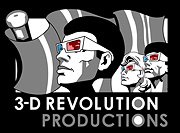3-D Oscar fever: Hugo 3D may win, but is the 3-D any good?
Within and outside of the 3-D community there has been an awful lot of talk about Hugo 3D, almost exclusively positive and full of praise for the use of 3-D and in no way questioning or challenging the 3-D cinematography. How healthy is that unquestioning attitude for the furthering and maturing of the 3-D film making medium I wonder? In order to further any art form one has to remain critical and analyze, moving on to higher standards and better quality. Hugo 3D is a great movie that employs some beautiful 3-D, but it also employs 3-D that causes eyestrain. It is very important to identify the problem areas of the movie and get closer to a problem-free or even artistically worthy 3-D cinematography, because it is only at this point that the Academy can say: “Yes, this is 3-D worthy of an OSCAR”, because an OSCAR is for movies that get everything really right, or at least more right than any other film out there right now.
I find it funny to see how it is considered bad karma for 3-D film making as a whole to talk negatively about the problem points in Hugo, just because this movie is 3-D’s best chance of winning more recognition from the Academy at the OSCARS. Hey, relax, it isn't going to be the last 3-D movie ever made and the 3-D Citizen Kane will happen one day as well (note: Hugo is far from that). Avatar won OSCARs first, but from the angle of technical achievement. Hugo is deemed to be the proof 3-D can be used creatively, to bebefit the story telling, and to such an extend it is OSCAR-worthy. Well, one can't tell the Academy what to like, but it is true Hugo is a great step forward for 3-D film making, no doubt there whatsoever. Irony then that the film is up against a French silent black & white movie: is it all about storytelling after all then? The irony doesn't just come from being on exact opposite technical scales, but also because Hugo is singing praise to exactly the kind of movie The Artist is. It is said to be careful what you wish for – you just might get it.
Let’s start by looking at the visual element that lies closest to the surface in Hugo 3D: negative parallax – out of screen 3-D elements. I would like to start this with a quote by Lenny Lipton from a decade earlier, as mentioned in the book 3-D Filmmakers. On sticking things out of the screen at every given opportunity Lenny says: "It’s like asking a musician to always play loud. You know, 'It’s always gotta be loud!' It’s really crazy.". Agreed, constant, active positive parallax is an exhausting thing and will most likely not result in a very appealing 3-D film. But the constant, relentless negative parallax-bashing of calling any negative parallax ‘gimmicky’ by the likes of James Cameron and colleagues is the opposite side of the scales. The mantra of negative parallax being bad *regardless* was introduced around 2003 and from this point in time onward 3-D filmmakers and the film going critics have been repeating the sentiment whenever possible. To me, this is purely why Average Joe is speaking in terms of scenery coming out of the screen as being gimmicky and scenery staying inside the screen as being desirable. The sentiment becomes very strange when all 3-D film, television program, 3DTV and laptop hardware advertising uses scenery coming out of the screen, at the audience. The only shots remembered by the 3D cinema-going audience after seeing a 3-D movie are the negative parallax shots. The 3-D audience even goes so far as to state that a movie ‘didn’t use any 3D’ or ‘didn’t use the 3D very well’ when negative parallax shots are missing or just too small in number. To me it is clear: people love negative parallax, but they hate to be heard saying something different from their cynical friends.
Unwittingly, the broad positive reaction to Hugo proves the very counter point to the ‘gimmicky’ argument, hidden in plain sight to all those airing it. You see, people seem to think that most of Hugo takes place behind the stereo window, in positive parallax. In reality however, throughout the film the convergence point of shots moves forward (further out of the screen), resulting in a large part of the movie taking place in negative parallax. It shows that pulling the audience into a movie by moving the scenery into negative parallax works so well that the audience thinks all of the action is taking place in positive parallax. To boot, the audience then highly rate the 3-D cinematography as well. It would appear we as 3-D film makers must now hide negative parallax elements through clever movement of convergence throughout the editing just to pretend any out of screen elements are still inside of the screen. Well, if it wins an OSCAR that way, I can live with it, but it does add a layer of cinematographic complexity to an already very complex medium. All the more reason to REALLY prepare the stereoscopic cinematography before storyboarding your film (yes, hire a stereographer!).
It is not the use of negative parallax in itself that is a problem in Hugo 3D. What jars for me is the use of extreme parallax values resulting in challenging eye gymnastics and even unwatchable 3D shots. In negative parallax this leads to decoupling and in positive parallax (inside the screen) this results in divergence (and decoupling) through the outward rotation of the eyes. Nobody has the eye muscles to do this, but perhaps Scorsese and his stereographer have eyes that sit very far apart in their heads (a large interocular), or they never watched dailies in a 3D cinema and only on small 3D preview monitors. What I can imagine is possibly an attempt to produce a 3D film that will hurt in the cinema but look good on handheld 3D devices (tablets, mobile phones) without the need to produce two or three masters of the film. Hmm, it doesn’t make much sense to me if that is truly the case, especially in light of the large production budget. But who knows what really goes on during producers’ lunches eh?
Interesting question: is Sky3D now going to say No to Hugo 3D because of its breach of Sky3D parallax guidelines? I doubt it.
Even more important that all this use of ‘illegally’ high parallax values is a distinct lack of stereoscopic rhythm in Hugo 3D. As a movie needs rhythm of editing, rhythm of colour and light and rhythm of dialogue, music and sound, 3D film needs rhythm of volume and depth. Keeping the same depth budget throughout a film is possible but it is not 3D cinematography – yeah well, unless one is aiming to produce the equivalent of a movie where every shot is exactly 3 seconds long, is always predominantly blue in colour and always brightly lit. Hugo 3D does increase interaxials for some shots, but the values only really go up, never down. The stress on the eyes just increases rather than creating a sense of importance. What a stereoscopic cinematographically intelligent 3D movie does is go flat and go volumetric, go shallow and go deep, move back and move forward, as per a rhythm coupled with story ups and downs, calms and climaxes. For those film makers who strive to use focal length, colour, sound and editing actively to externalize subjective reality and inter-character relationships, the active use of 3D makes sense. For a 3D cooking program – probably not. Especially since these will be shot with fixed-lens 3-D cameras, in the real-world of television budgets and schedules. But for 200 million Dollar plus 3D movies – can you possibly consider otherwise?! And mind you, that includes post-conversions of movies shot in 2D, converted to 3D. The need for cinematographic stereography is exactly the same as on a natively shot 3-D movie.
Dramatic changes in interaxial, point of convergence and other 3D cinematographic elements can result in the audience thinking the 3-D is ‘broken’ or mistakes was made in post-production. This won’t be the case if the audience doesn’t notice the subtle flow (like the subtle forward movement of convergence) and not if the lowest and highest values never hit extremes like zero parallax, >10% parallax or divergence. Besides, if everything is always loud, as Lenny Lipton reminds us, it’s really crazy and worse, you won’t notice the important parts. True impact can only happen when preceding shots are calm – but I am telling you something there you already knew. Don’t ignore that basic storytelling and film making premise in 3-D either!
Let’s be clear about it: the production of Hugo shows that 3-D film making is already at a point of high level technical quality - even when Avatar already showed this two years earlier, but at twice the production budget. Still, Hugo was produced for a massive amount of money, which of course buys high technical quality regardless of the level on offer for 'real world' production budgets. So we come to a point where cinematography has to be employed more subtly and with more emotional impact. In the end, losing the emotional connection with your audience will cost a movie production at the box office, the bottom line. Disappointing boxoffice figures for Hugo 3D point out that something did go wrong with the cinematography and/or storytelling of the film. What the production also points out is that producing a 3-D film or TV/tablet specific product now only has a point if it is at least on par with the technical and creative brilliance of Hugo. The audience at large will be expecting no less. So any current and future 3-D production will most definitely need to hire a 3-D consultant and/or stereographer / stereoscopic supervisor and not take a chance on its ROI. And with 3-D, that investment will always be larger – come an OSCAR win or not.











